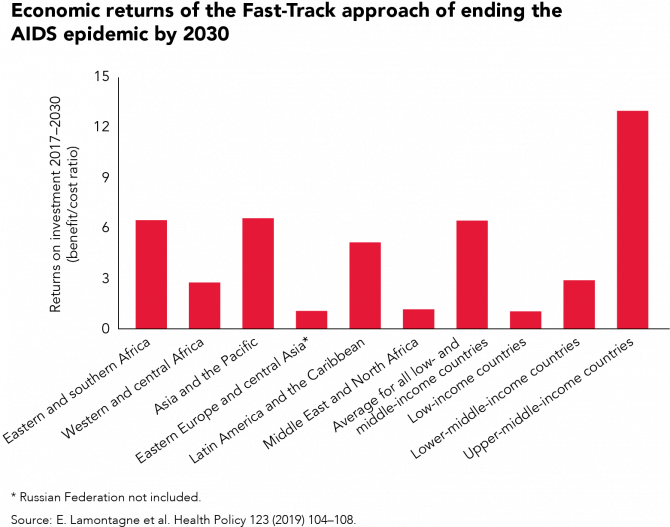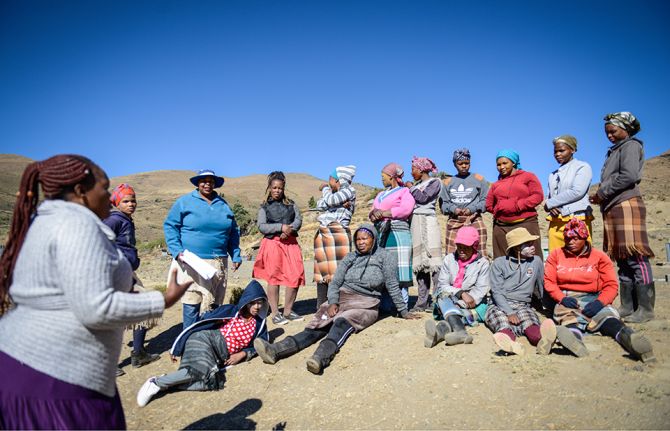

Update
Investing in HIV really does pay off
24 February 2020
24 February 2020 24 February 2020When countries agreed at the United Nations High-Level Meeting on Ending AIDS in 2016 to Fast-Track the response to HIV, one of the commitments they made was to scale up investment in the AIDS response. Although countries agreed to invest at least US$ 26 billion per year by the end of 2020, in 2018 total investments were just US$ 19 billion—a shortfall of some US$ 7 billion and a drop of US$ 1 billion from 2017, a worrying downward trend in overall funding for HIV.
However, the case for investing in the AIDS response is strong, and a recent analysis of costs and benefits using the full income approach by Lamontagne et al. (2019) has demonstrated the economic returns of ending the AIDS epidemic. It has been shown that under the Fast-Track approach—whereby a high upfront investment leads to large reductions in new HIV infections and AIDS-related deaths—each dollar invested brings up to US$ 6.44 of economic returns in low- and middle-income countries. Even under a more conservative constant-coverage scenario—whereby investment is such that coverage of HIV-related services were kept constant at 2015 levels and new HIV infections and AIDS-related deaths don’t fall—the economic return on each dollar is still positive, at US$ 2.55 in low- and middle-income countries.
The analysis shows variations among different world regions, ranging under the Fast-Track approach from US$ 1.05 in eastern Europe and central Asia to US$ 6.58 in Asia and the Pacific, but the central message remains: investing in HIV really does pay off.



